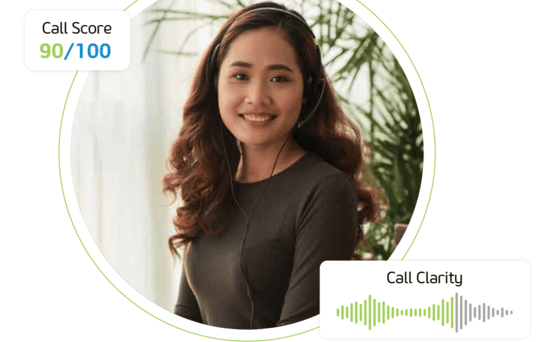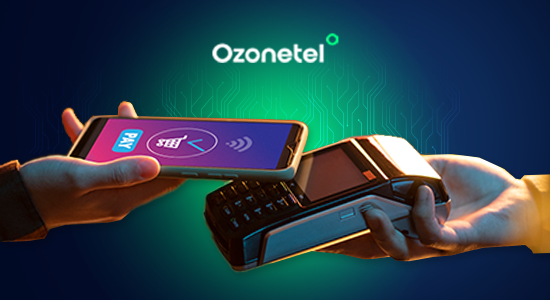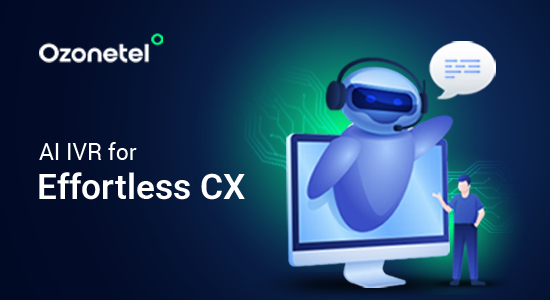- Resources
- Call Tracking Metrics: Everything You Need to Know
Call Tracking Metrics: Everything You Need to Know
Call tracking metrics are useful in monitoring and analyzing phone calls received by your business. For example, a specific call tracking metric can give you information about customer behavior and staff ‘s proficiency in handling calls. Basically, these metrics can reveal which campaigns are driving the most calls and which ones are converting those calls into sales.
In this article, we will cut through the jargon and get straight to the meaning of call tracking metrics. We’ll explain what they are, why they matter, and how you can use them to improve your marketing strategies. Read along!
In this article, we will explore:
What Are Call Tracking Metrics?
Call tracking metrics are key indicators of the performance and efficiency of a call center. Metrics such as call duration, call volume, first-call resolution rate, and call source offer businesses granular details in the effectiveness of call-related activities. They help in identifying operational bottlenecks, evaluating agent performance, and measuring the overall effectiveness of marketing campaigns and customer service.
For example, by comparing missed and answered calls, you can find missed opportunities that can be quickly followed up on. Alternatively, analyzing call times and dates helps you in determining when your client’s business is most active.
Now, a lot of people confuse call-tracking metrics with key performance indicators (KPIs). While the two concepts are closely linked, they serve different purpose
Call metrics assess the performance of different business operations while KPIs measures progress towards achieving broader business activities. In other words, KPIs are time-bound goals that directly impact the business results.
Importance of Call Tracking Metrics
It is crucial to efficiently monitor call tracking metrics because they provide useful insight into customer behavior and help identify service gaps. The benefits of call tracking metrics are further discussed below:
Identifies Effective Channels: Call tracking metrics reveal which channels offer the highest return on investment by analyzing traffic and conversion rates.
Base for Deeper Analysis: They provide essential data for examining consumer categories, demographics, and behaviors.
Monitors for Issues: Regular monitoring helps detect potential problems that could negatively impact customer experience and increase churn rates.
Measures Agent Performance: Metrics track the volume of leads and conversions handled by contact center agents, assessing their effectiveness.
Spots Emerging Trends: Ongoing data collection enables the early identification of trends, allowing for quick adjustments to address challenges or enhance successful operations.
Optimizes Marketing Spend: These metrics guide strategic investments by highlighting the channels that deliver the best performance and value.
Enhances Customer Insights: They offer detailed data that helps refine marketing strategies and improve customer engagement based on tracked interactions.
What Call Tracking Metrics Should You Track?

While there are multiple call tracking metrics you could monitor, some are absolute must-haves for any call center. Here are the key call tracking metrics that will give you a clear picture of your team’s performance and customer satisfaction:
Call Volume
Tracking call volumes shows you how many people are calling. Large call volume, combined with a high conversion rate, indicates that your company is doing well in terms of client acquisition. On the other hand, high call volumes with a low conversion rate may result in you losing money by paying more workers to take calls while you aren’t making any more money.
𝐹𝑜𝑟𝑚𝑢𝑙𝑎 𝑓𝑜𝑟 𝑇𝑜𝑡𝑎𝑙 𝐶𝑎𝑙𝑙 𝑉𝑜𝑙𝑢𝑚𝑒: 𝑁𝑢𝑚𝑏𝑒𝑟 𝑜𝑓 𝐴𝑔𝑒𝑛𝑡 𝐶𝑎𝑙𝑙𝑠 + 𝑁𝑢𝑚𝑏𝑒𝑟 𝑜𝑓 𝑆𝑒𝑙𝑓 − 𝑆𝑒𝑟𝑣𝑖𝑐𝑒 𝐶𝑎𝑙𝑙𝑠.
Additionally, call volume is divided into two major areas for analysis:
- Agent Calls: Total calls handled directly by live agents.
- Self-Service Calls: The total number of calls handled by an automated system, such as Interactive Voice Response (IVR).
Average Call Duration
Call duration can affect customer happiness, but more significantly, optimizing this measure will allow you to reduce queue and abandonment rates. Usually, shorter call durations indicate that the caller had a very common query. On the other side, a lengthier call duration may indicate a larger issue that needs to be addressed.
However, call times may also be lengthier when a consumer wants to learn more about your product and displays customer engagement. To further understand this, study various caller questions and determine how long they generally take, then strategize on ways to shorten call times.
First-Call Resolution Rate
The first-call resolution rate is the percentage of calls where the agent resolves a customer’s issue on the first call. This indicates that the issue was resolved without the need to transfer, escalate, halt, or return the call.
𝐹𝐶𝑅 = (𝑇𝑜𝑡𝑎𝑙 𝐼𝑠𝑠𝑢𝑒𝑠 𝑅𝑒𝑠𝑜𝑙𝑣𝑒𝑑 𝑜𝑛 𝐹𝑖𝑟𝑠𝑡 𝐶𝑜𝑛𝑡𝑎𝑐𝑡 ÷ 𝑇𝑜𝑡𝑎𝑙 𝑁𝑢𝑚𝑏𝑒𝑟 𝑜𝑓 𝐹𝑖𝑟𝑠𝑡 𝐶𝑜𝑛𝑡𝑎𝑐𝑡𝑠) 𝑥 100
Usually, a higher FCR indicates good call/contact quality, with agents capable of promptly understanding, troubleshooting, and addressing customer issues. This provides the customer with a seamless and enjoyable experience, eliminating the irritation of callbacks or transfers.
Cost Per Call (CPC)
This metric calculates the average cost paid by a call center when handling each phone call. Tracking CPC over time demonstrates the financial efficiency of your operations and can be used to plan capacity and budgets.
𝐶𝑃𝐶 = 𝑇𝑜𝑡𝑎𝑙 𝐶𝑜𝑠𝑡 𝑜𝑓 𝐶𝑎𝑙𝑙 𝐶𝑒𝑛𝑡𝑒𝑟 𝑂𝑝𝑒𝑟𝑎𝑡𝑖𝑜𝑛𝑠 / 𝑇𝑜𝑡𝑎𝑙 𝐶𝑎𝑙𝑙𝑠 𝐻𝑎𝑛𝑑𝑙𝑒𝑑
Typically, a lower CPC indicates improved contact center productivity and financial efficiency. To control budgets, you can set a target CPC and compare actual monthly/quarterly performance to that goal. Plus, when combined with customer satisfaction scores, CPC reflects the ROI of customer experience (CX) initiatives.
Conversion Rate For Sales Calls
This metric indicates how many callers become paying customers and assists you in determining which efforts generate the most conversions, are underperforming, or are failing.
However, it is critical to identify and attribute calls precisely and consistently; not every inbound call will result in a sale. It could take weeks or months, depending on the client, the product or service, and a variety of other factors.
To better improve your sales operations and determine how long it takes to convert a lead into a paying customer, call metrics tracking on the initial call is critical.
Call Abandonment Rate
Call abandonment rate is a measure of how many callers hang up before speaking with an agent. This call monitoring measure should ideally be zero (or close to it), because large call abandonment rates indicate that you are likely understaffed, your support personnel is underperforming, your call technology is inadequate, or something is wrong with your operations.
𝐶𝑎𝑙𝑙 𝐴𝑏𝑎𝑛𝑑𝑜𝑛𝑚𝑒𝑛𝑡 𝑅𝑎𝑡𝑒 = (𝑁𝑢𝑚𝑏𝑒𝑟 𝑜𝑓 𝐴𝑏𝑎𝑛𝑑𝑜𝑛𝑒𝑑 𝐶𝑎𝑙𝑙𝑠/𝑇𝑜𝑡𝑎𝑙 𝑁𝑢𝑚𝑏𝑒𝑟 𝑜𝑓 𝐼𝑛𝑐𝑜𝑚𝑖𝑛𝑔 𝐶𝑎𝑙𝑙𝑠) 𝑋 100
To enhance this, you can give customers an option to request a callback.. This means that clients can continue in line without being put on hold, and an agent will call them when it is their turn. You might also instruct your agents to automatically create tickets from abandoned calls (assuming a callback number is available).
Customer Satisfaction
CSAT indicates the average customer experience and satisfaction levels with your customer assistance or services. Think of this measure as an essential part of your quality assurance strategy.
And while there is no standard survey or scoring technique, customers are typically asked how satisfied they were with various aspects of the call on a scale of one to five. The CSAT is then calculated as the proportion of happy customers out of the total.
𝐶𝑆𝐴𝑇: (𝑁𝑢𝑚𝑏𝑒𝑟 𝑜𝑓 𝑆𝑎𝑡𝑖𝑠𝑓𝑖𝑒𝑑 𝐶𝑢𝑠𝑡𝑜𝑚𝑒𝑟𝑠 / 𝑇𝑜𝑡𝑎𝑙 𝑁𝑢𝑚𝑏𝑒𝑟 𝑜𝑓 𝑆𝑢𝑟𝑣𝑒𝑦 𝑅𝑒𝑠𝑝𝑜𝑛𝑑𝑒𝑛𝑡𝑠) * 100
Usually, the higher your CSAT score is, the better customer experience is provided by your firm.
Repeat Call Rate
The recurrent call rate allows you to see which consumer complaints were not addressed the first time around. Tracking repeat calls and collecting customer feedback can reveal recurring issues, allowing management teams to devise remedies and prevent them from happening again.
𝑅𝑒𝑝𝑒𝑎𝑡 𝐶𝑎𝑙𝑙 𝑅𝑎𝑡𝑒 = (𝑁𝑜. 𝑜𝑓 𝑐𝑎𝑙𝑙 𝑎𝑏𝑜𝑢𝑡 𝑎 𝑠𝑝𝑒𝑐𝑖𝑓𝑖𝑐 𝑝𝑟𝑜𝑏𝑙𝑒𝑚 / 𝑇𝑜𝑡𝑎𝑙 𝑛𝑜. 𝑜𝑓 𝑐𝑎𝑙𝑙𝑠) × 100
To improve your repeat call rate, identify common recurring issues which will help you understand where the gap lies in agent training. It also enables management to include solutions in self-service alternatives, allowing clients to assist themselves rather than waiting to speak with an agent.
How Call Tracking Metric Help Improve Call Center Performance?

Call tracking can significantly contribute to this goal by providing higher returns on marketing activities with reduced expenditure and effort. Here’s how call tracking benefits businesses:
Track the Right Insights
Whatever tracking metrics you choose, they will give you a fair sense of where to focus your efforts. For example, it is impractical to expect to listen in on every discussion and provide precise feedback on contact agent effectiveness. As a result, some metrics give you exclusive data on your agent’s performance.
Therefore, depending on your organization’s goals and objectives, you must select the appropriate metrics to track. This will allow you to determine who is performing well and who requires additional training. You may also determine whether your customers are satisfied with your services, and support team both before and a er a call.
Get to the Root of Your Problem
If any one of your call center campaigns is operating exceptionally well or poorly, or if it has had a significant change in a short period of time, you must determine why. And call tracking metrics lets you do just that! For example, if the call queue is unusually long, you should investigate whether this is due to a lack of agents, a low level of service, or staff spending too much time on the phone. Once you’ve determined the cause of the problem, you may begin working on a solution.
Enhance Your Strategies
Call tracking can also help you figure out where your operational strategies are going amiss. How? Correlating good and negative customer feedback allows you to determine where you’re going wrong. Later, depending on the information gathered, you may improve employee training, change speech and language, eliminate mistakes by agents, and give better customer support.
Benchmark Your Data
Call center benchmarking refers to comparing your organization’s procedures and KPIs to those of other similar firms. Most call tracking metrics can be benchmarked to determine where your organization stands in terms of call center performance.
According to reports, these measures usually include a 5-8% average call abandonment rate, a 70-75% first-call resolution rate, and 80% of service level calls resolved within 20 seconds. And comparing this data to that of your competitors can provide you with significant information that will allow you to make data-driven decisions.
How Improved Call Center Metrics Help Boost CX
In call centers, your organization’s performance can make or break customer relationships. And to ensure that it doesn’t break it, you can leverage advanced call tracking metrics that boost your customer’s experience. Let’s explore how improved call tracking metrics are boosting CX across different industries:
In healthcare, call monitoring allows for quality assurance, ensuring that sensitive medical information is handled correctly. With features like instant call-backs and prioritized queuing for urgent cases, healthcare providers can significantly reduce patient stress and improve overall satisfaction.
For instance, the National Health Authority (NHA) partnered with Ozonetel to use AI-driven speech analytics to carefully assess over 122,000 hours of conversations in 11 vernacular languages.
This allowed them to identify areas for improvement, customize training programs for its 900+ healthcare advisers, and eventually enhance first-contact resolution rates. Also, it increased satisfaction and a streamlined remote monitoring process, saving supervisors a stunning 30 hours each month
How Can Call Tracking and Recording Help Achieve KPIs
Call recording enables you to evaluate real-time customer interactions, which gives a lot of information. You can now use these recordings to point out the strengths and weaknesses of your agents. Let’s see how call tracking and recording can help you achieve and surpass your KPIs.
- Improved Agent Performance: Call tracking metrics give a clear picture of how well or badly your employees are doing. Average handle time, first-call resolution rates and customer satisfaction scores are some of the metrics that can be monitored. They help you identify efficient employees as well those who require help.
- Optimized Call Routing: Information such as peak-calling times and types of customer inquiries can be deduced from call tracking data. This allows you to tailor your call-routing strategies accordingly. An effective strategy should ensure that calls are routed to the most suitable and available agent.
- Increased Sales Conversion Rates: Efficient sales pitches can be identified from the call tracking data. You can analyze them and then apply them throughout your team. On the other hand, analyzing the calls which made zero sales can highlight areas of improvement.
- Streamlined Quality Assurance Process: You don’t have to depend on infrequent monitoring and feedback from customers. There is now an entire database full of conversations you can analyze.
- Enhanced Compliance: You can verify that agents are following required scripts, disclosing necessary information, and adhering to industry regulations by regularly auditing calls. This not only helps you avoid costly fines but also improves your compliance rate KPI.
Conclusion
An efficient call monitoring tool offers businesses real results that show the success or failure of any marketing effort. Thus, we propose that you invest in customer experience technologies, such as Ozonetel. The platform not only tracks essential metrics but also provides in-depth analysis of results, enabling you to gauge success accurately and refine strategies for improved outcomes.
Ozonetel allows you to measure metrics such as call quality score and customer satisfaction for thousands of calls in only a few minutes, as well as access many choices for effective data analysis. It can also help accelerate your service support operations by tailoring your audit procedure.
Final thoughts
By choosing the right AI-powered solution, companies can significantly improve customer satisfaction, reduce operational costs, and gain valuable insights into their service performance. And as you decide on the AI call center software to deploy in your organization, consider Ozonetel’s comprehensive suite of AI-powered tools.
Ozonetel offers a robust platform that integrates seamlessly with your existing systems, providing advanced features like intelligent routing, sentiment analysis, and real-time agent assistance. With its user-friendly interface and quick
Want to see what Ozonetel can do for your company? Sign up today for a free 7-day trial.
Prashanth Kancherla
Chief Operating Officer, Ozonetel Communications
Over the past decade, Prashanth has worked with 3000+ customer experience and contact center leaders...
Chief Operating Officer, Ozonetel Communications
Over the past decade, Prashanth has worked with 3000+ customer experience and contact center leaders to comprehensively understand the need for effective and efficient customer communications at every step of their journey with a brand. Deeply embedded in today’s CCaaS ecosystem, he has been instrumental in Ozonetel's growth and contributed in various roles including product management, sales, and solution architecture.
Frequently Asked Questions
The digital experience (DX) is the collection of responses a user or consumer experiences when interacting with a company. This includes digital experience platforms such as the firm website, apps, social media, and chatbots. The goal is to use these digital resources to increase user happiness and create a great customer experience.
The five key components of digital experience are typically user experience design, content strategy and management, personalization and consumer insights, multichannel delivery, and technology and infrastructure. By strategically blending these components, businesses may create a seamless consumer contact that is both interesting and rewarding.
Some common emerging digital experience trends include voice commerce, hyper-personalization, AI-driven customer service and immersive technologies, such as augmented reality (AR) and virtual reality (VR). Adapting to these emerging digital trends will help you remain relevant and competitive in such a saturated market.







